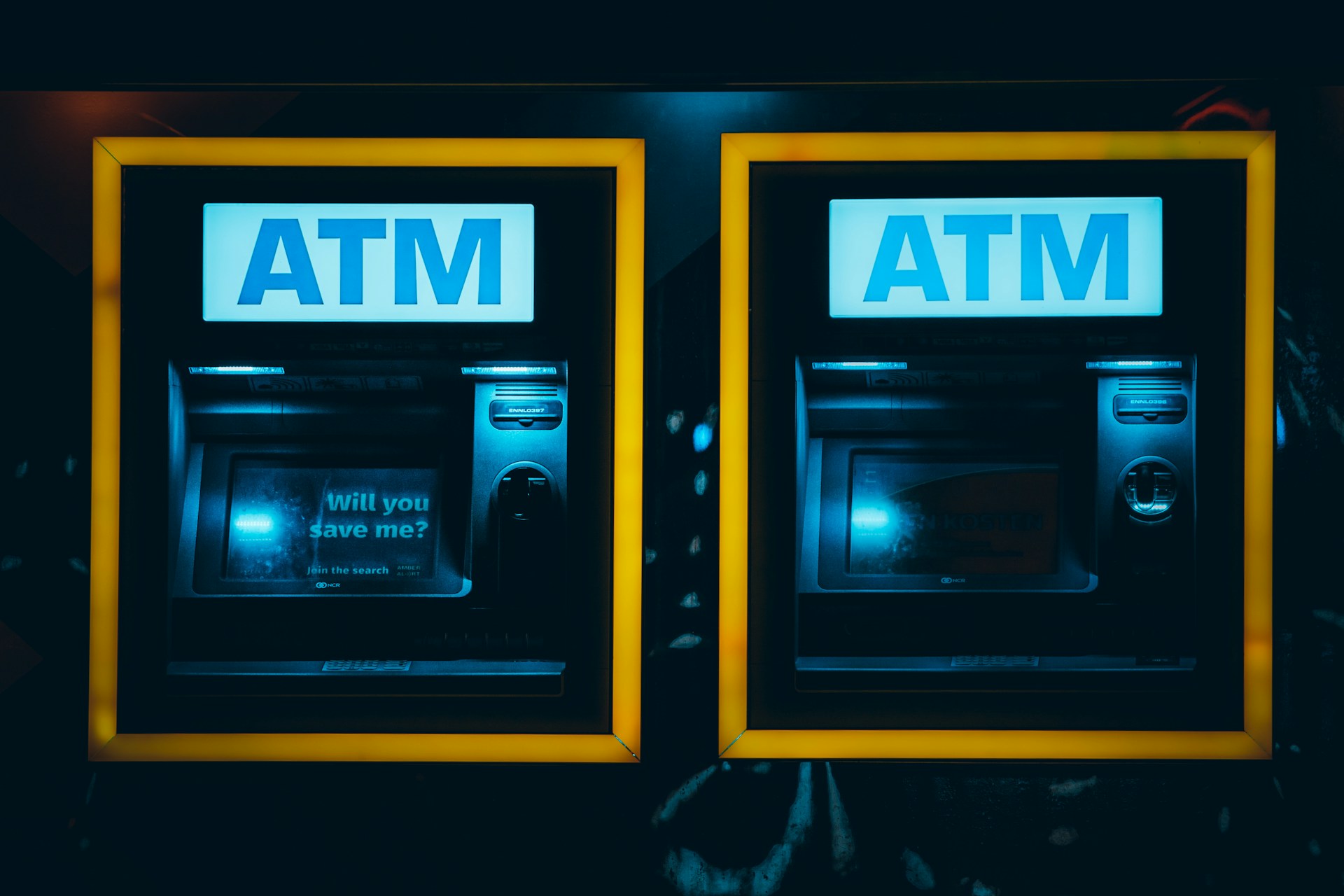Top ATM Tech Trends to Watch in 2026

The ATM, once a simple cash dispenser, is now bridging the gap between the physical and digital banking worlds. It has evolved into a multi-functional hub that can handle a wide range of transactions and technologies.
While younger customers often prefer mobile banking apps, many people still rely on physical cash. In the current financial landscape where banks need to balance innovation, accessibility and efficiency, the latest ATM technology trends are set to redefine banking convenience.
ATM-as-a-Service (ATMaaS) models
Financial institutions have long grappled with the cost and complexity of owning and managing extensive ATM networks. Economic pressure and regulatory demands for continued access to cash are significant drivers for banks to deploy ATM-as-a-Service (ATMaaS) models and ATM outsourcing services.
About 31% of respondents (2024/25 ATM & Self-Service Software Trends survey) have outsourced operational monitoring and management; 23% have outsourced host processing and software development; and 15% have fully outsourced all ATM-related responsibilities.
Banks simply provide the ATM location, while specialist ATM managed service providers, like Brink’s, handle everything else. From hardware and software to outsource ATM maintenance and comprehensive cash management, ATM outsourcing services significantly reduce operational complexity, while ensuring access to the latest banking technology advancements and security features.
They also help banks scale services according to demand without heavy upfront investment, optimizing their cash by ensuring their ATMs are always available and efficiently managed.
Pooling v ATM outsourcing
As mentioned above, ATM outsourcing is ideal for banks and financial institutions looking to reduce operational burdens and leverage specialist expertise quickly. On the other hand, ATM pooling – while requiring complex agreements and longer implementation times – prioritizes cost efficiency and increased accessibility.
Both models have distinct advantages but the undeniable trend points towards hybrid ATM management models. Banks are re-evaluating traditional ATM ownership, increasingly favoring collaborative or outsourced strategies for greater cost-effectiveness, regulatory compliance and optimized service delivery. This often involves merging ATM networks, before outsourcing specific services or portions to specialized ATM managed service providers.
Learn more about ATM outsourcing trends here for further information.
Cash recycling systems
ATM Cash management remains a substantial cost center, accounting for up to 10% of a bank’s operating costs. To optimize cash management and reduce expenses, cash recycling technologies are proving popular, with 44% of banks planning to implement them. Authenticated notes from cash deposits and withdrawals are securely stored in cassettes, sorted by denomination. When another customer requests a withdrawal, the machine dispenses notes directly from these pre-validated, deposited funds, thereby optimizing the flow of physical currency. The global deployment of cash-recycling ATMs rose from 973,000 in 2020 to over 1 million in 2021, and this figure is projected to surpass 1.2 million by 2026.
Learn more about cash recycling systems here for further information.
Advanced security measures such as encryption and tokenization
ATM security remains a critical concern, with evolving threats shifting focus from physical attacks like jackpotting (19%) and hardware compromise (23%) to card theft and data compromise, cited as the top threat by 42% of organisations. New methods like “shimming” further exacerbate these digital vulnerabilities.
The ATM industry also faced what has been dubbed a ‘double whammy’ of regulatory requirements. The PCI SSC mandated that by 1st January 2025, ATMs must deploy the latest encrypting PIN pads (EPP) and current firmware or software with TR31 Phase 3 key blocks for enhanced data encryption. After this time, host processors will not accept transactions from non-compliant ATMs. This follows a decade of significant regulatory changes, including ADA standards (2010), EMV requirements (2017) and the Windows 7 to 10 migration, all of which required significant investment with no additional revenue.
Beyond physical safeguards, Artificial Intelligence (AI) and Machine Learning (ML) are increasingly used to enable real-time threat detection, which significantly strengthens ATM defenses against evolving digital attacks. Nearly 38% of banks are planning to use AI to identify sophisticated fraud patterns and reduce false positives.
Broader use of Artificial Intelligence and Machine Learning in ATM operations
AI and ML can deliver advanced personalization of the ATM experience by analyzing transaction history to offer tailored menus and language options. AI is also revolutionizing cash management through predictive analytics, accurately forecasting cash demand to optimize inventories and rebalance cash levels, which not only reduces ATM downtime but also lowers operational costs associated with cash-in-transit (CIT) services.
Finally, AI can improve ATM placement by analyzing footfall and transaction patterns, ensuring optimal locations to generate maximum revenue. However, some industry experts have cautioned that AI is not a panacea and shouldn’t be solely relied upon to decide and define ATM network management and user experience.
Sustainable and eco-friendly ATM solutions
Future ATMs will be more energy-efficient, use recycled materials and produce fewer paper receipts. Energy consumption can be optimized through efficient hardware, intelligent power management software and even leveraging renewable energy sources such as solar panels. Cash recycling also contributes to environmental benefits by reducing the frequency of cash-in-transit (CIT) visits and associated carbon emissions.
Contactless payments
To ensure access to cash is a more convenient, digital experience, a growing number of banks are offering contactless card transactions. When asked about user interface enhancements, about 44% of bank participants said they planned to offer this kind of consistency in the near future. ATMs will increasingly support Near Field Communication (NFC) and QR codes, enabling cardless cash withdrawals. It also supports hygiene by reducing physical contact with surfaces.
Integration with mobile devices and digital wallets
Banks are increasingly focused on integrating ATM interfaces with mobile and online banking experiences. According to BAI’s Banking Outlook: 2024 Trends, 60% of Gen Z consumers would switch banks for better digital capabilities. Česká spořitelna, the largest bank in the Czech Republic, offers completely contactless ATM transactions through its mobile banking app. Customers can pre-stage withdrawals on their phones and then scan QR codes at ATMs to receive cash without needing to insert cards or enter PINs.
Biometric authentication for enhanced security
Biometric authentication is rapidly replacing traditional PINs for greater security. From fingerprint recognition to facial scanning, the convenience factor is significant, as biometrics can reduce transaction times and improve customer trust, while also minimizing risks like card skimming. Identity verification will shift toward fingerprints, facial recognition, iris scans and voiceprints.
Enhanced customer experience through voice-activated ATMs
Natural Language Processing (NLP) is enabling significant benefits in ATM functionality by powering voice-activated interfaces. It offers greater accessibility and a more natural and conversational interaction, ultimately leading to a more intuitive and enhanced customer experience.
Advanced Interactive Teller Machines (ITMs)
Advanced Interactive Teller Machines (ITMs) go beyond basic ATM functionalities, allowing financial institutions to offer extended hours and bilingual teller transactions. They provide immediate assistance for customers’ self-service needs, effectively bridging the gap between traditional ATMs and human interaction, resulting in greater accessibility and inclusivity. These “Super-ATMs” often feature live video support, connecting users to remote tellers for real-time assistance, which is particularly useful in locations without traditional branches. Many are designed as “Talking ATMs” with audio guidance, braille keypads, adjustable screens and high-contrast displays to better serve visually impaired and disabled users.
5G network integration for faster ATM transactions
The rollout of 5G promises to revolutionize ATM performance and speed up connectivity. It offers significantly more bandwidth, lower latency and higher device density compared to 4G, enabling instant transactions and real-time problem-solving via live video calls with bank representatives.
The ATM industry is far from static. As financial institutions navigate evolving customer expectations, cost pressures and security threats, ATM technology trends will define the future of ATM banking.
To secure their role in this tech evolution, banks must continue to invest in and master the digital customer experience. Embracing these emerging trends, through strategic investment and partnerships, will be key to ensuring that the ATM remains a resilient, intelligent and relevant component of modern banking.
To discover more out how Brink’s AMS can help, please feel free to get in touch.







